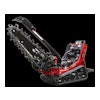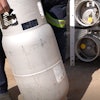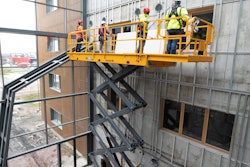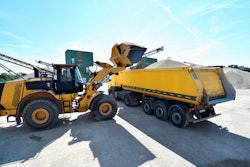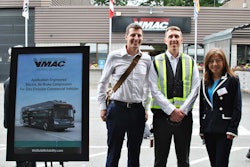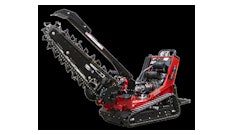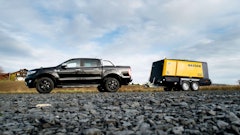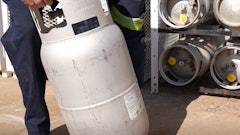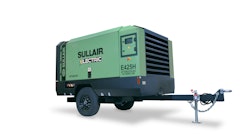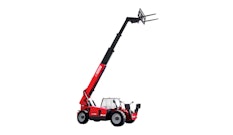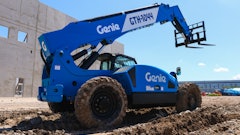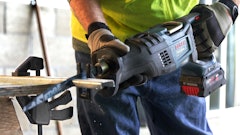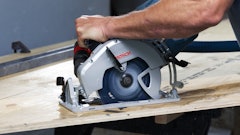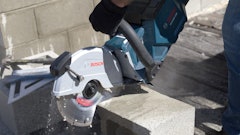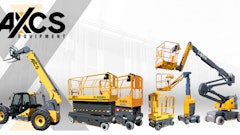
For the past few years, electrification of rental equipment has been part of a larger discussion on greener ways of operation to meet stricter emissions regulations, follow environmentally friendly practices, and keep up with an increasing industry demand for such equipment.
Companies offering electric equipment rental offerings are noting an uptick in the demand for it in recent years.
There are many challenges and benefits associated with the use of electric equipment, as the adoption of electric construction equipment is quickly growing domestically and globally. Driving factors include noise reduction; lower operating fuel and maintenance costs; government emission regulations; federal and state tax credits; carbon credits and offset, and environmental, social and corporate governance goals.
Renting EV Construction Equipment Raises Awareness of Benefits
Renting such equipment can be one way of “kicking the tires” before full adoption of its use on jobsites.
Mike Slattery, VOLTEQ vice president of business development, noted the construction equipment rental path is “one way for people to get the experience and understanding they don’t yet have with electric construction equipment.”
Lars Arnold, product manager – sustainable power, Volvo Construction Equipment, pointed out the rental channel is quite receptive to electric equipment and is expected to have good availability in the next few years because of its simplicity of maintenance, no fuel-related hassles for renters, mechanics at the rental center and enhanced features such as GPS and telematics that help track equipment and reduce risk of theft.
Liam O’Hara, Sunbelt Rentals program manager, noted a definite shift toward electric equipment in certain markets, which he said is driven in some instances by regulatory changes at the government level.
“For example, states such as California now have mandates in place that require certain products to be electric or transition to an electric alternative in the future,” he pointed out. “Also, a lot of general contractors — especially larger ones — have sustainability goals that are driving the demand for electric equipment rental.”
O’Hara noted there is still some education to be done on the project level to further increase the demand for electric equipment rental offerings.
“As a rental partner, we can help improve awareness,” he pointed out. “Contractors may not know the variety of electric equipment that is available or its benefits, but rental can remove the barrier to entry by offering different options.”
EV Equipment Demand Increases
Troy Greenleaf, president of General Rental Center in Old Town, Maine, noted of the demand for electric rental equipment that, “I don’t think it’s a shift all the way over to electric from any other platform, but definitely, the requests and the need has definitely increased.”
In terms of the demand for electrical equipment rentals compared to the demand for standard internal combustion engine equipment rentals, Greenleaf noted that “on the whole, it’s a very small piece of where we are — most things are still gasoline- or diesel engine-driven.”
“At Sunbelt Rentals, we still see the demand for standard internal combustion engine equipment outpacing that of electric equipment,” O’Hara said. “That is likely a matter of contractors steering toward what is familiar. However, there are applications where we see a higher demand for electric equipment.
“Whenever there’s indoor demolition or maintenance, contractors can rely on a wide variety of electric equipment to assist with the job since there is no concern about emissions.”
Noise on the jobsite is another driving factor.
A benefit of the use of electric construction equipment is the ability to work in densely populated areas, night jobs, indoor demolition, agriculture, food production and high-dust environments where sparking is a concern, noted Arnold.
O’Hara noted electric equipment is in high demand for projects that take place in noise-sensitive areas, such as hospitals or schools. He also sees a demand for electric equipment in urban areas where there are nighttime noise ordinances.
“Contractors can work the third shift without concern of violating those,” O’Hara said.
Rental Companies Increasing EV Equipment Offerings
Sunbelt Rentals has made an ongoing effort to increase its electric equipment offerings, O’Hara noted.
“We want our customers to have access to equipment that will meet their project needs and sustainability goals,” he pointed out. “Historically, we have offered traditional options like electric mobile elevating work platforms, scissor lifts, forklifts, and power tools. But now we have entered into the market with electric telehandlers, skid steers and excavators.”
In September 2022, Sunbelt Rentals became the first national rental company to adopt Bobcat all-electric technology when the company announced the delivery of the first Bobcat T7X all-electric compact loader.
Also that year, Sunbelt Rentals joined United Rentals in incorporating F-150 Lightning Trucks into its fleets.
The company’s fleet of Bobcat T7X all-electric compact track loaders in the California market has increased in recent years, with more than 100 available for rent.
“We have also made a significant increase in our offering of battery energy storage systems (BESS), so we can provide customers with sustainable energy in the battery form where utility power may not be fully available,” O’Hara noted.
Greenleaf said his company has not increased its electric rental offerings “in any meaningful way. The reasons for that being it is very expensive. The initial purchase price of an electric piece of equipment versus a gas or diesel piece of equipment is a substantial price difference.
“In this situation, I don’t think the demand is enough for me to get utilization on a lot of this stuff to make it cost effective or profitable.”
Greenleaf said while his company offers very few choices in electric rental equipment, “we are heavily looking into it for a couple of reasons. I do think that it is the way the future is going. I think you are going to see a lot of things transition to electric.
“For us being a small, independent, single store family-owned business, there are not a lot of dealers up here for any type of electrical equipment. There is not a huge amount of competition. It is an untapped market.”
Addressing Challenges
Speaking to the challenges involved in the construction equipment rental space, “we have to be absolutely thorough in understanding the needs of our customers’ projects to provide the best possible electric equipment recommendation,” said Matt DiDonato, Sunbelt Rentals director of fleet product development.
“That especially includes understanding the duty cycle of the application so we can assess the charge and runtime as it compares to diesel,” he said. “We also have to educate customers as to the benefits of electric equipment, such as the reduction in fuel cost and noise.”
“When we are specifying electric equipment, we have to ask additional questions that aren’t typically asked when delivering diesel equipment,” O’Hara noted, adding that the company must consider the availability and location of power sources to charge the equipment.
“We want customers to have power close enough to the areas they are working in, so they do not deplete battery life just by driving the equipment there,” he added.
Equipment adoption is another challenge, O’Hara said. “We need to continue to drive awareness, making sure our local markets know what we have in stock,” he added.
For contractors, renting electric equipment is a premium upfront, said O’Hara. “It typically costs more than a traditional combustion machine, which can be off-putting, but they will see benefits in fuel reduction,” he added.
Changing Perceptions
Greenleaf said that changing perceptions about electric equipment is one of the biggest challenges he observes.
“Most of these guys have been operating gas and diesel equipment for 10 to 50 years,” he added. “It is not necessarily better or worse, just different. It is going to offer a different set of challenges as far as maintaining it and storing it.”
As electric construction equipment continues to emerge on jobsites, both original equipment manufacturers (OEMs) and rental houses have begun to address concerns regarding diminished power, charging requirements, battery operation and maintenance requirements.
Greenleaf noted that while electric equipment will have a more expensive upfront cost, the cost of ownership over time is less.
“You’re not doing oil changes or putting gas into it every day,” Greenleaf noted, adding maintenance is simplified as well.
In a recent Equipment Today article on electric scissor lifts, Bob Begley, director of product management, scissor lifts, JLG, pointed out that while the performance of a lithium-ion operated machine is equal to that of a conventional diesel-powered machine, “we anticipate lithium-ion batteries will become more affordable and the technology will become more accessible; therefore, there will be less need and demand for engine-powered models.”
A recent IDTechEx report shows while it is in its early stages, the electric construction machine market will “benefit from other sectors having already gone through electrification and will be able to accelerate quickly with existing supply chains for batteries, motors, and other EV components that it will need to make this transition. [OEMs] are moving quickly to electrify their product ranges.”
As those in the construction industry continue to further consider the adoption of electric vehicle technologies, hesitancy to work with EV construction equipment often centers on concerns such as having enough power and torque required to do the work, keeping equipment charged, and properly and safely training equipment operators.
High-performance and fast-charging batteries are decreasing range anxiety and improving vehicle reliability and user experience. Economy, technology and resource availability will play a greater role in driving the change.
Long-Term Costs Lower for EV Equipment
Arnold noted that while the initial purchase price is higher for electric equipment, money is saved on maintenance and fuel:
- Maintenance-free electric motors featuring auto shutoff
- Fully electric drivelines reducing hydraulic oil needs by half
- Easy ground-level access to lubrication and maintenance points
- Maintenance-free, lithium-ion batteries
Slattery emphasized that savings result from the absence of a combustion engine that requires maintenance or eventual repair of oil, air and fuel filters, engine coolant, radiator and thermostat.
Other savings factors include fuel sensors, injectors, belts and alternators.
Savings by charging with electricity versus gas or diesel varies based on regional markets and fluctuations in commodity prices, Slattery added.
Slattery also noted improved jobsite conditions for employees working with zero emissions and greatly reduced decibel output, with the latter improving the ability for crew members to hear each other more easily while communicating on the jobsite.
Charging Options Improve
Micro-grid and on-site generation are promising technologies that can replace existing fossil fuel generating equipment, provide electric energy to battery vehicles and machines and power other site needs such as lights, Arnold noted.
Slattery said factors in charging plans before leasing electric equipment include:
- The number of hours or shifts per day that the equipment will be used.
- The duty factor needed.
- Necessary charging requirements (voltage and amperage) and the connector type required to recharge.
Whether charging is required on the jobsite or if sufficient run time is available to meet daily requirements before moving equipment to a location where charging is possible. If charging at the jobsite is necessary and power is not already available, contractors should explore options for battery storage packs, said Slattery. While a generator is another option, “this is generally viewed as contradictory to the point of having electric equipment,” said Slattery, adding it may be possible to run a more powerful generator for a shorter period to recharge, greatly reducing emissions.
Quickly and easily swapping batteries at the jobsite is not yet common for mobile construction equipment because of battery size, capacity, cost and weight but will change as technology advances, said Slattery.
EV Future Is Promising
In terms of the construction rental marketplace balance shifting toward or away from electric if at all, O’Hara noted electric equipment rental is going to increase, whether from mandates at the state level or because companies are now getting more serious about their own sustainability goals.
“As electric equipment becomes more readily available, the cost will also come down, so renting electric equipment may be more appealing to contractors,” he said.
“We are still on the uphill climb of achieving customer acceptance of electric equipment,” DiDonato added. “As we gain that over time, rental of this equipment will open itself up to additional opportunities and help us more rapidly expand our electrified fleet.”

